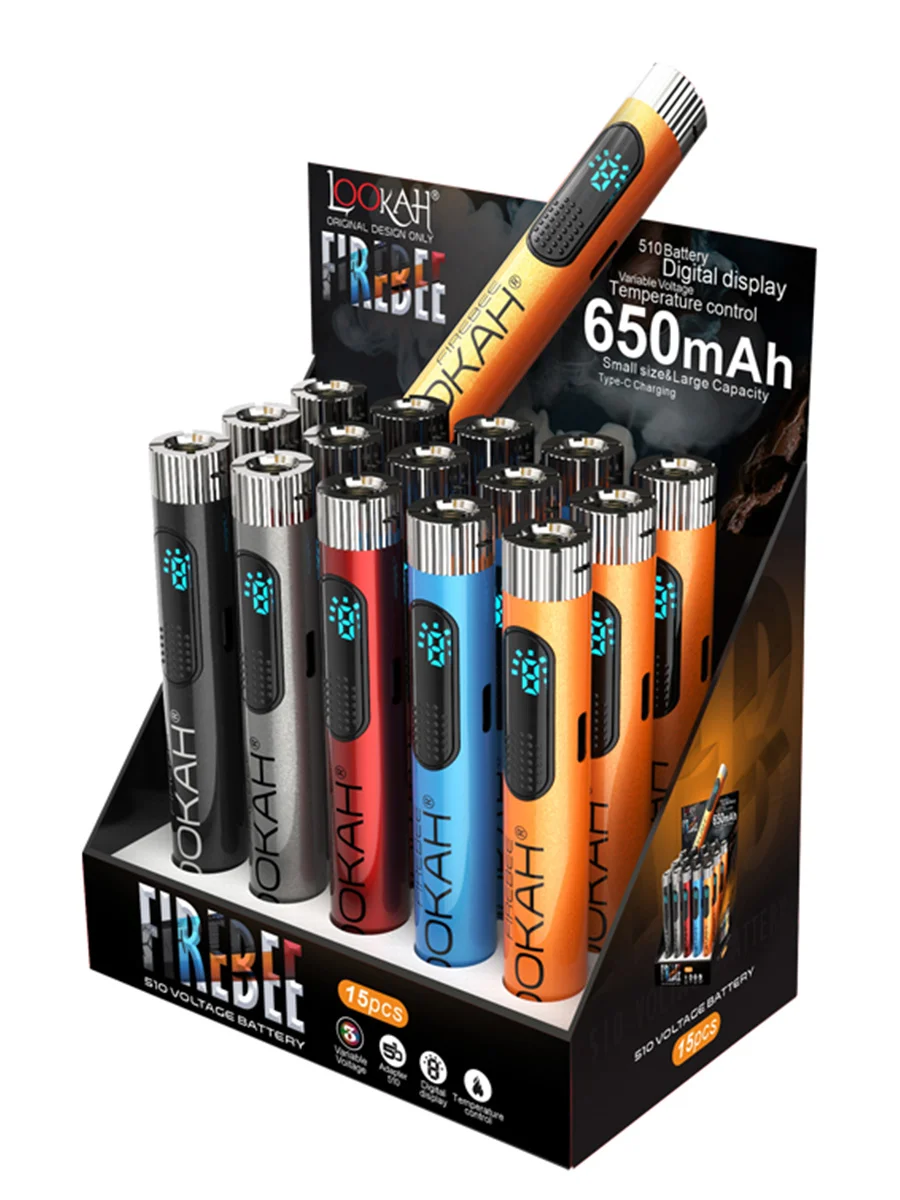Understanding the Benefits and Features of 510 Thread Battery

What is a 510 Thread Battery?
Definition and Breakdown of Components
The 510 thread battery serves as a vital component in the world of vaping, acting as the powerhouse that energizes various vape cartridges. The term ‘510’ refers to the specifications of the threading that connects the battery to the vape cartridge – specifically, ten threads that are each 0.5 mm in diameter. This standardized connection allows for a universal fit across countless devices and cartridges, promoting compatibility and convenience for users.
Understanding the critical components of a 510 thread battery enhances user experience significantly. Key parts include:
- Battery casing: Often made from aluminum or durable plastics, the casing protects internal components and adds aesthetic appeal.
- Lithium-ion cell: The core of a 510 thread battery, responsible for energy storage and output. Capacity varies, requiring users to select batteries that meet their needs.
- Connection point: The threaded area where the cartridge screws in, featuring a mechanism allowing for a secure attachment and ideal conductivity.
- Power button: Many batteries feature a button that activates the device, allowing users to control when the battery engages.
- Indicator lights: Visual cues that inform the user about the battery status, charging level, and even voltage settings, enhancing usability.
History and Evolution of the 510 Thread Battery
Initially developed in the late 2000s, the 510 thread battery arose from the growing popularity of vaping and personal vaporization devices. The initiative behind establishing a standardized thread size was to simplify compatibility between batteries and cartridges, which at the time varied significantly across manufacturers.
Over the years, advancements in battery technology have fueled the evolution of 510 thread batteries. Early versions were often limited in voltage and battery capacity. However, innovations have led to the emergence of high-capacity lithium-ion batteries with adjustable voltage settings, enabling users to customize their vaping experience based on personal preferences and the specific cartridge being used.
In recent years, the integration of features such as temperature control and USB charging has further propelled the popularity of 510 thread batteries, making them accessible and user-friendly for both newcomers and seasoned vapors alike.
Common Applications in Vaping Devices
The versatility of the 510 thread battery is a significant factor in its widespread adoption. Common applications include:
- Oil Cartridges: The most prevalent use of 510 thread batteries is with oil cartridges filled with e-juice or cannabis oil, maximizing inhalation efficiency.
- Dab Pens: For those who prefer concentrating their usage, a 510 thread battery can power a dab pen, offering intense flavor and vapor production.
- Dry Herb Vaporizers: Though often associated with oil, many dry herb vaporization devices utilize 510 threading as well, enhancing the user’s versatility in consumption methods.
- Devices with Adjustable Features: Batteries have also made their way into advanced personal vaporizers that offer varied settings, allowing consumers to tailor their experiences based on desired vapor production and flavor profiles.
How to Choose the Right 510 Thread Battery
Key Features to Consider
Choosing the right 510 thread battery is crucial to enhancing your vaping experience. Several key features should guide your decision:
- Battery Capacity: Measured in milliampere-hours (mAh), the capacity determines how long your battery can power your device before requiring a recharge. Lower capacities, typically around 300 mAh, may be suitable for casual use, while high-capacity options of 900 mAh or more cater to heavy users.
- Voltage Settings: Adjustable voltage settings allow users to control the intensity of heating within the cartridge, impacting flavor and vapor production. Look for batteries with multiple voltage options to find what suits you best.
- Charging Method: Consider whether the battery uses USB, magnetic, or proprietary charging methods. USB charging is typically more convenient, allowing users to recharge on the go easily.
- Size and Portability: Depending on whether you prefer discreet or portable options, the size of the battery can impact your choice. Compact models fit better in pockets and bags, while larger models may offer extended use but are less portable.
Variations in Capacity and Performance
The performance of a 510 thread battery is directly linked to its capacity and design choices. As mentioned earlier, batteries range from modest capacities around 300 mAh suitable for light users to robust options that exceed 900 mAh for those with heavier consumption needs. However, higher capacity does not always equate to better performance.
Variations in technology, such as the use of advanced lithium-ion mixtures or proprietary circuit designs, can also affect how long a battery lasts per session. Furthermore, opt for batteries that support rapid charging without compromising the battery lifespan. Understanding these differences ensures you pick a battery that not only lasts longer but also meets your performance expectations.
Understanding Voltage Settings
Voltage settings play a crucial role in the vaping experience, influencing vapor production, potency, and flavor. Many 510 thread batteries come with adjustable settings that allow users to customize their experience. Here’s what you need to know about voltage:
- Low Voltage (3.3 – 3.7V): Typically ideal for flavor-oriented usage in cartridges, providing a cooler vapor that retains subtle flavors.
- Medium Voltage (3.7 – 4.0V): A balance between vapor production and flavor, making it suitable for most users.
- High Voltage (4.0 – 4.8V): Produces thicker vapor and more pronounced hits, best for users seeking stronger potency.
Choosing the right voltage is a matter of personal preference, therefore experimenting with different settings can help you discover what works best for your specific cartridge and desired experience.
Setting Up Your 510 Thread Battery
Initial Charging and Preparation
Before reaping the benefits of your new 510 thread battery, the initial setup requires proper charging and preparation. Follow these steps:
- Unpacking: Carefully remove the battery and charger from the packaging, ensuring no debris or packaging parts remain lodged in the threading.
- First Charge: Insert the battery into the charger and plug it into a power source. The charging time will vary depending on the battery’s capacity, so refer to the manufacturer’s guidelines.
- Indicator Check: Observe the battery’s indicator light. A change in color typically indicates when it is fully charged, allowing for safe detachment.
- Read Instructions: Familiarize yourself with any additional features specific to the battery, which may include default voltage settings or unique usage instructions.
How to Properly Attach Cartridges
Attaching cartridges securely ensures a solid connection, which is crucial for optimal vapor production and flavor retention. Here’s how to properly connect a cartridge to your 510 thread battery:
- Align Threads: Gently line up the threaded area of the cartridge with that of the battery. Make sure to handle both components carefully to avoid cross-threading.
- Screw in Securely: Slowly screw the cartridge onto the 510 threads until secure, but take care not to overtighten, which can damage the connection.
- Check Alignment: Perform a visual inspection to ensure that the cartridge is straight and securely attached, as a loose connection may lead to leaking or vapor production issues.
Troubleshooting Common Connection Issues
Connection problems can frustrate users and diminish the overall experience. Here are some common issues and their solutions:
- Weak Vapor or No Vapor: This could be due to insufficient battery power. Ensure the battery is charged, and check that the cartridge is securely attached. If issues persist, the cartridge may be blocked or burnt out.
- Leaking Cartridges: Improper attachment can lead to leaking. Check that the cartridge is screwed on correctly and not over-tightened, leading to breakage.
- Inconsistent Performance: Variability in connection can create inconsistent performance. Cleaning the threads of both the battery and cartridge with a cotton swab can help restore connection quality.
Maintaining Your 510 Thread Battery
Tips for Long-Lasting Battery Life
Maintaining the longevity of your 510 thread battery requires a combination of proper usage and care. Implementing the following practices will help enhance battery life:
- Avoid Overcharging: Leaving the battery plugged in after full charge can reduce its lifespan. Unplug it once fully charged.
- Use Proper Chargers: Always use the recommended charger that comes with your battery. Using cheaper alternatives can damage battery cells.
- Temperature Awareness: Keep your battery away from extreme heat or cold, as these conditions adversely affect battery performance and longevity.
- Regular Use: Batteries that sit idle for long periods are prone to self-discharge. Utilize your battery regularly to keep it functioning optimally.
Cleaning and Care Techniques
Regular cleaning will ensure optimal performance and enhance the lifespan of your battery. Follow these cleaning techniques:
- Disconnect Components: Always ensure the battery is fully disconnected from the cartridge before cleaning.
- Use a Soft Cloth: Wipe down the exterior with a soft, lint-free cloth to remove any residue. Avoid using water or harsh chemicals that may seep into the battery.
- Clean Connection Points: Use a cotton swab dipped in isopropyl alcohol to clean the threading where the cartridge connects, removing any debris or residue build-up.
Storage Recommendations
Proper storage of your 510 thread battery is essential for maintaining its functionality. Here are best practices to follow:
- Keep It Dry: Store your battery in a dry environment to prevent moisture damage, which could lead to short-circuiting.
- Avoid High Temperatures: Excessive heat can lead to battery swelling or leaks. Store your battery in a cool, shaded area.
- Separate Storage: If you’re using multiple batteries, store them separately to avoid contact and possible short-circuiting.
The Future of 510 Thread Battery Technology
Innovations on the Horizon
The 510 thread battery technology continually evolves, presenting exciting innovations for enthusiasts and everyday users alike. Emerging developments include:
- Enhanced Battery Materials: Researchers are focusing on developing new battery materials that offer longer lifespans, faster charging times, and improved performance.
- Smart Technology Integration: The incorporation of Bluetooth technology allows users to control their devices through apps, providing detailed usage statistics and customizable settings.
- Environmental Sustainability: As the demand for eco-friendly products heightens, manufacturers are exploring biodegradable materials and more sustainable production methods.
Market Trends and Consumer Preferences
Recent market analyses indicate a growing preference for batteries equipped with adjustable features, as users seek tailored experiences. The demand for discreet yet powerful products has also surged, prompting the creation of compact designs without sacrificing power. Furthermore, the rise of brand loyalty hinges on the customer support and warranty options provided by manufacturers.
Potential Challenges Facing the Industry
Despite the advancements, the 510 thread battery industry faces challenges such as:
- Regulatory Compliance: As regulations around vaping products tighten, manufacturers must adapt to ensure compliance, often requiring redesigns of existing products.
- Market Saturation: With countless options available, distinguishing products in a saturated market poses a challenge for both manufacturers and consumers alike.
- Consumer Education: With rapid advancements, educating consumers on the latest technologies and best practices is crucial for ensuring maximum satisfaction and safety.



Leave a Comment